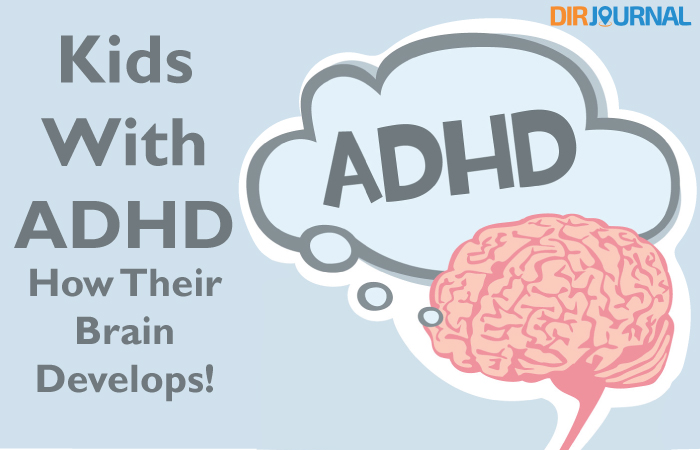For many years, there was the question of whether ADHD is a result of the kids’ brains developing slowly when compared to normal children or developing in a different way.
Researchers at the National Institute of Health Study revealed that the results of their latest studies show that the kids’ brains develop more slowly, especially the important areas for action, attention and control. They found that maturity is delayed by about three years in children with ADHD. If a normal child achieves maturity in those areas at the age of seven, a child with ADHD achieves it at ten.
Attention deficit hyperactive disorder (ADHD) affects about 8 – 10% school-age kids. Boys are more likely to be affected than girls and nobody knows why.
Kids with ADHD are hyperactive, act without thinking and have a problem with focusing on anything for long. It is difficult to get them to sit down and study.
Kids with ADHD are usually taken to be just hyperactive when they are very small because most kids act that way when they are excited. But parents usually get suspicious that there may be a problem, when they start receiving complaints from the school and they notice “different” behavior. As these children grow, their abnormal social behavior begins to become more visible. Their performance at school is usually not at par with the other students.
Medically, ADHD is divided into three types, and the type of ADHD the kid is suffering from is determined based on specific behavioral traits:
Inattentive Type
• Inability to pay attention to details or making careless errors in school work
• Difficulty paying attention to play activities and other tasks
• Listening problems
• Difficulty following instructions
• Avoiding tasks involving mental work
• Losing notebooks, homework, toys etc.
• Get distracted easily
• Forgetful even with daily activities
Hyperactive-Impulsive Type
• Fidgeting
• Squirming
• Difficulty remaining in one place
• Excessive running or climbing
• Playing noisily
• Always on the go
• Excessive talking
• Giving answers without hearing the complete questions
• Cannot wait in a line or for their turn
• Interrupting nature
Combined Type
These kids have signs of both the above types and this is the most common type of ADHD.
Now scientists find important information that leads them to believe that the brain of an ADHD child is no different from a normal child. They both develop in the same way, from back to front, except that the ADHD brain development is much slower.
This fact was not known before because scientists relied on MRI scans of the brain that can only capture one image at a time. But for this study, a team at the National Institute of Mental Health used multiple snapshots of the children’s brains taken at regular intervals as they grew up. These snapshots were then assembled together. They measured the thinning and thickening of sites in the brain’s cortex, which is the grey matter, in hundreds of children and teenagers, half of them with ADHD and the other half without. These tests concluded that ADHD is a result of delay in the maturation of the cortex and the same changes were found in all the kids with ADHD.
According to the lead author, Philip Shaw, in children with ADHD, last to mature in the brain are the bits that are important for the control of action and attention.
It is interesting to note that the cortical thickness in healthy kids starts off thin in early childhood, keeps increasing until it reaches its peak at about 7 or 8 years of age, and then it starts getting thinner throughout adolescence. The difference with kids with ADHD is that their cortical thickness peaks at around 10 years of age, which is two or three years later than normal kids. This delay was most evident in the area of the brain that controls action and attention.
Studies are still going on to see if these kids will outgrow their behaviors that are part of ADHD. Scientists feel that it may happen, but well into their adulthood. While most children seem to grow out of it very well, there are a few exceptions, who continue to have problems and scientists suspect it could be because their brains remain immature for some reason.
With this knowledge that slower development is the root of the problem, there may be treatments in the future that can accelerate growth. Scientists say that if they could know early on, which children are likely to grow out of it, it would help in reassuring the parents as well as trying to see what could be done to help those that may continue to have problems.
They are hopeful that they may find some clues studying infant brains, which was not done in this study. They will need to understand exactly what is happening in the brain in the early days of a child or even before birth.
This certainly is a consolation for many parents who suffer not knowing why their children have ADHD. There are a lot of myths surrounding the cause of ADHD. Some of them include poor parenting, vaccines or too much sugar. Now parents know this is not true. They know that their child is developing the same way as any other normal child, just a few years slower.













